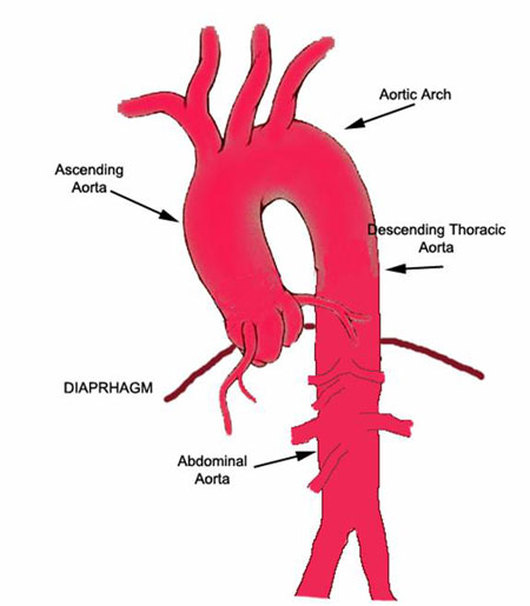
Emergency surgery is required to try to prevent death.

If dissection occurs, people can still be treated with surgery. It's important to treat an aortic aneurysm to try to prevent dissection. When this happens, it's called an aortic rupture.Īn aortic dissection is a potentially life-threatening emergency, depending on where in the aorta it occurs. Sometimes the bleeding moves completely outside the aorta. This causes bleeding into and along the aortic wall.

In aortic dissection, a tear occurs in the wall of the aorta. Having an aortic aneurysm increases the risk of a tear in the aortic lining, called a dissection, as shown in the image on the right. An aneurysm can occur anywhere in the aorta. Rarely, some people who are injured in falls or motor vehicle crashes develop thoracic aortic aneurysms.Īn aortic aneurysm occurs when a weak spot in the wall of the aorta begins to bulge, as shown in the image on the left. Though rare, it's possible to develop a thoracic aortic aneurysm if you've had an untreated infection, such as syphilis or salmonella. People who are born with an aortic valve that has only two flaps instead of three have an increased risk of a thoracic aneurysm. The aortic valve is between the lower left heart chamber and the aorta. Conditions that involve blood vessel inflammation, such as giant cell arteritis and Takayasu arteritis, are associated with thoracic aortic aneurysms. Other genetic conditions linked to aortic aneurysm and dissection and rupture include vascular Ehlers-Danlos, Loeys-Dietz and Turner syndromes. Marfan syndrome, a genetic condition that affects the connective tissue in the body, may cause weakness in the wall of the aorta. Aortic aneurysms in younger people often have a genetic cause. High blood pressure and high cholesterol increase the risk of atherosclerosis. Additional pressure can cause the arteries to weaken and widen. Plaque buildup on the artery walls causes the arteries to become less flexible. Hardening of the arteries, called atherosclerosis.If an aneurysm forms between the upper and lower parts of the aorta, it's called a thoracoabdominal aneurysm.Ī thoracic aneurysm may be round or tube-shaped.Īneurysms can occur anywhere in the thoracic aorta, including near the heart, in the aortic arch and in the lower part of the thoracic aorta.Ĭauses of thoracic aortic aneurysms may include: When an aneurysm occurs in the chest, it's called a thoracic aortic aneurysm. The aorta runs from the heart through the chest and belly area. Call 911 or your local emergency number for immediate help.Īortic aneurysms can develop anywhere in the body's main artery, called the aorta. An aortic dissection or aneurysm rupture is a medical emergency. Most people with aortic aneurysms don't have symptoms unless a dissection or rupture occurs.

Some aneurysms may never rupture or lead to dissection. Sharp, sudden pain in the upper back that spreads downward.Symptoms that a thoracic aortic aneurysm has ruptured or dissected include: How quickly a thoracic aortic aneurysm may grow is difficult to predict.Īs a thoracic aortic aneurysm grows, symptoms may include: There are usually no symptoms, making them difficult to detect. Thoracic aortic aneurysms often grow slowly.


 0 kommentar(er)
0 kommentar(er)
